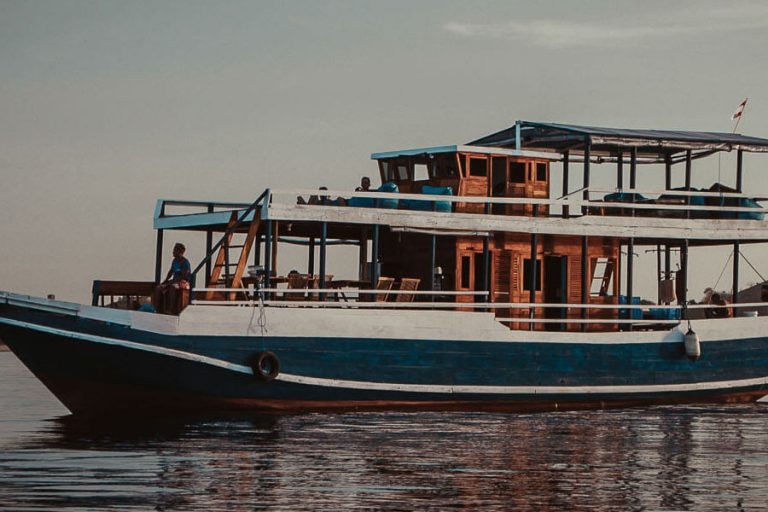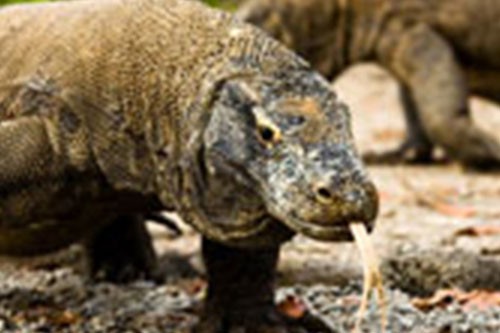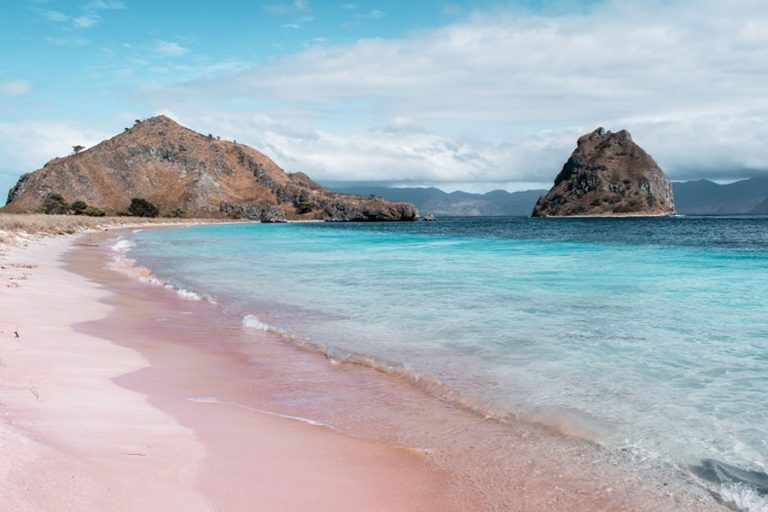Located between the islands of Sumbawa and Flores in the East Nusatenggara province, sits the vast and impressive Komodo National Park. The Komodo National Park encompasses a total of 29 volcanic islands (including the 3 major islands Rinca, Padar and Komodo) and is home to approximately 2,500 Komodo Dragons and other terrestrial fauna such as various species of reptiles, birds, and mammals. The park’s terrain is uniquely diverse, consisting of a mountainous hillside, tropical rain forests, grass-woodland savannah, and pristine white sandy beaches that harbor rich marine biodiversity. The marine environment in the Komodo National Park is one of the world’s richest in flora and fauna and is still relatively undiscovered. The 2,000 km2 park (which includes protected land and water), is recognized as a global conservation priority area and has an array of natural attractions.
Approximately reaching 3 meters in length and weighing over 70kg, the Komodo Dragon (or otherwise known as Varanus Komodoensis), is the world’s largest lizard and reptile. The dragons are identified by their massive size, flat heads, bowed legs, long thick tails, and fork-shaped tongues. Komodos can run and swim up to 20kph and have an excellent vision where it can see objects from 300m away. A fierce predator, these reptiles are carnivores and can eat 80% of their weight in one feeding. The Komodo can consume very large prey such as water buffalo, deer, carrion, pigs and even humans. It has a unique way of killing by biting its prey - especially when it is a large water buffalo, - surrounding it in a group then wait patiently until the poison in its saliva has slowly killed its victim. After which it completely shreds apart and devoured with bones and all. If the prey escapes, it will usually die within 24 hours due to the poisoning of the blood that comes from the venomous and bacteria-ridden saliva.
Only found in the world within the Komodo National Park and the surrounding Flores island, these Jurassic and majestic creatures are the park’s star attraction. Although awesome to see, visitors are urged to keep a distance and exercise caution. Always be accompanied by a ranger and follow all the ranger’s instructions when in the proximity to these dangerous lizards, although they may look pretty docile.


































